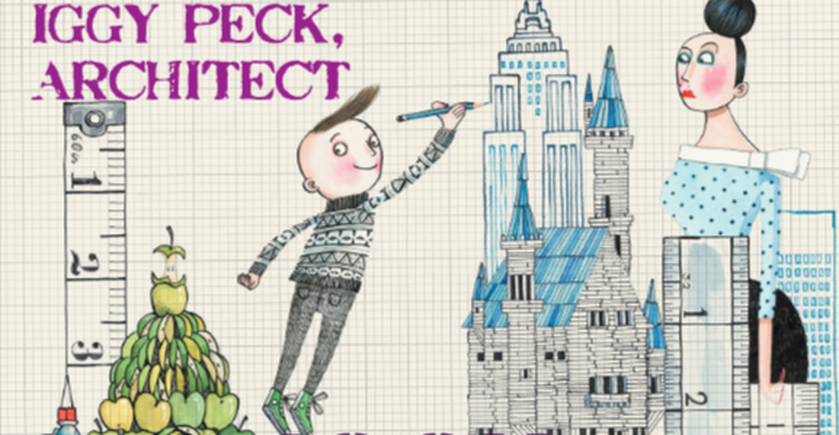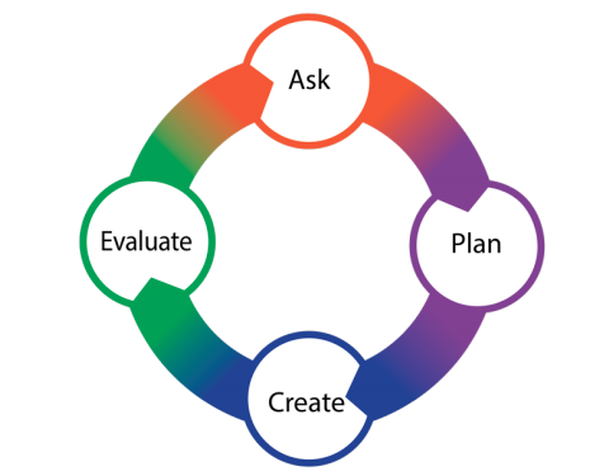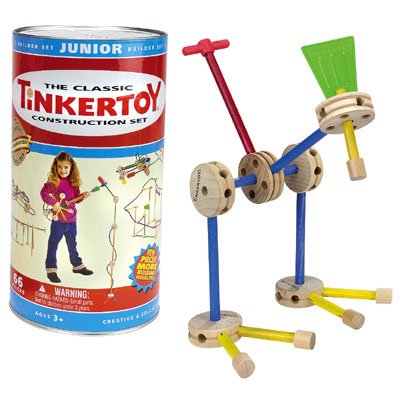KINDERGARTEN
LESSON 4: IGGY PECK ARCHITECT
LESSON MISSION
ACTIVITY 1: "E" FOR ENGINEERINGIn our first lesson, you learned about what S.T.E.M. stands for. The "E" stands for Engineering. You also learned a little about engineering. In this lesson you will learn a little more about what engineers do and you will also learn how they do it.
I am going to read you a story called, Iggy Peck, Architect. I have embedded a video below that you can watch at home if you like.
ACTIVITY 2: DISCUSSION TIMELet's think about the story and discuss these questions together:
ACTIVITY 3: ARCHITECTS ARE ENGINEERSLet's learn more about architects by watching a video. I have embedded it below so that you can watch it at home if you like.
|
TOOL BOXTERMS TO KNOW
engineering: designing and building complex products, machines, systems, or structures engineers: people who design and build complex products, machines, systems, or structures architect: a person who designs buildings design process: the plan that engineers and architects use to design and build new things that help solve problems model: a small version of what a structure or object will look like prototype: the first version of a machine or device that is created, tested, studied, and improved upon before it is built or produced evaluate: to make a judgement about whether something is good or not |
ACTIVITY 4: HOW DO THEY DO IT?
Architects, like all engineers, have a plan for designing and building. It is called, the Design Process. Look at the picture below.
SOLVING PROBLEMS
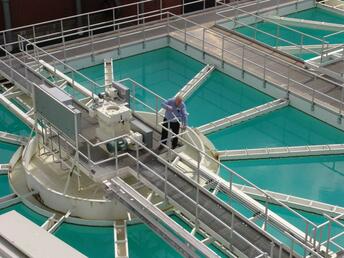
Engineers and architects design and build things in order to solve problems. Cities leaders ask them to design water and sewer systems to help cities have clean water. Government leaders ask them to build bridges, roads, tunnels, and interstate exchanges to help prevent traffic problems. Businesses and companies in big cities need large spaces and offices for businesses and company and employee housing. Big cities do not have much ground to build wide buildings with all the space they need, so they ask engineers and architects to design skyscrapers so that they have the space they need but do not take up as much ground space.
DESIGN PROCESS
Ask

The first thing that engineers and architects do is ask questions. They ask questions to learn more about the problem that needs to be solved.
Plan
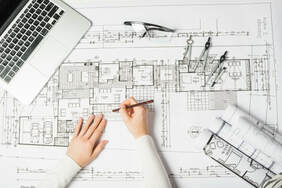
The second thing that engineers and architects do is design a plan that they believe will solve the problem using the information they learned from asking questions.
Create
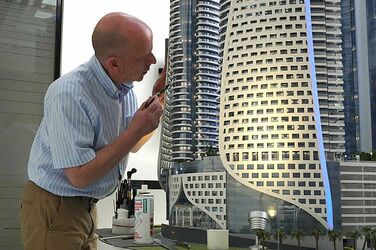
The third thing that engineers and architects do is create a model or prototype. A model is a small version of what a structure or object will look like. A prototype is the first version of a machine or device that is created, tested, studied, and improved upon before it is built or produced.
Evaluate

Finally, engineers and architects evaluate their prototype or model designs. Evaluate means to make a judgement about whether something is good or not. If the model or prototype doesn't solve the problem, engineers and architects figure out why and repeat the design process again. If the model or prototype solves the problem, engineers and architects try to make improvements to make it even better.
ACTIVITY 5: IT'S YOUR TURN!
Now it's your turn. You will be divided into groups and participate in a challenge. Each group will use the design process to build a bridge that can support a medium sized hardback book.
|
Step 1: Ask
The first thing you do in the design process is ask questions so that you can learn more about the problem. You know that you must build a bridge that can support a medium sized book. You have also learned about ways architects build strong bridges. Step 2: Plan
The second thing you do in the design process is plan. Each group will use a can of Tinker Toys to create their bridge. Using what you have learned, draw a picture of how you will use the Tinker Toys to build a stable bridge. |
Step 3: Create
The third thing you do in the design process is create. With your group, use the Tinker Toys to build the bridge you designed in your drawing.
The third thing you do in the design process is create. With your group, use the Tinker Toys to build the bridge you designed in your drawing.
Step 4: Evaluate
The final thing you do in the design process is evaluate. With your group, test your design. Does your bridge support the book? If it does, discuss with your group what you believe made your design work. If it does not, discuss with your group why you believe it did not work and what you would change to make it work.
The final thing you do in the design process is evaluate. With your group, test your design. Does your bridge support the book? If it does, discuss with your group what you believe made your design work. If it does not, discuss with your group why you believe it did not work and what you would change to make it work.
